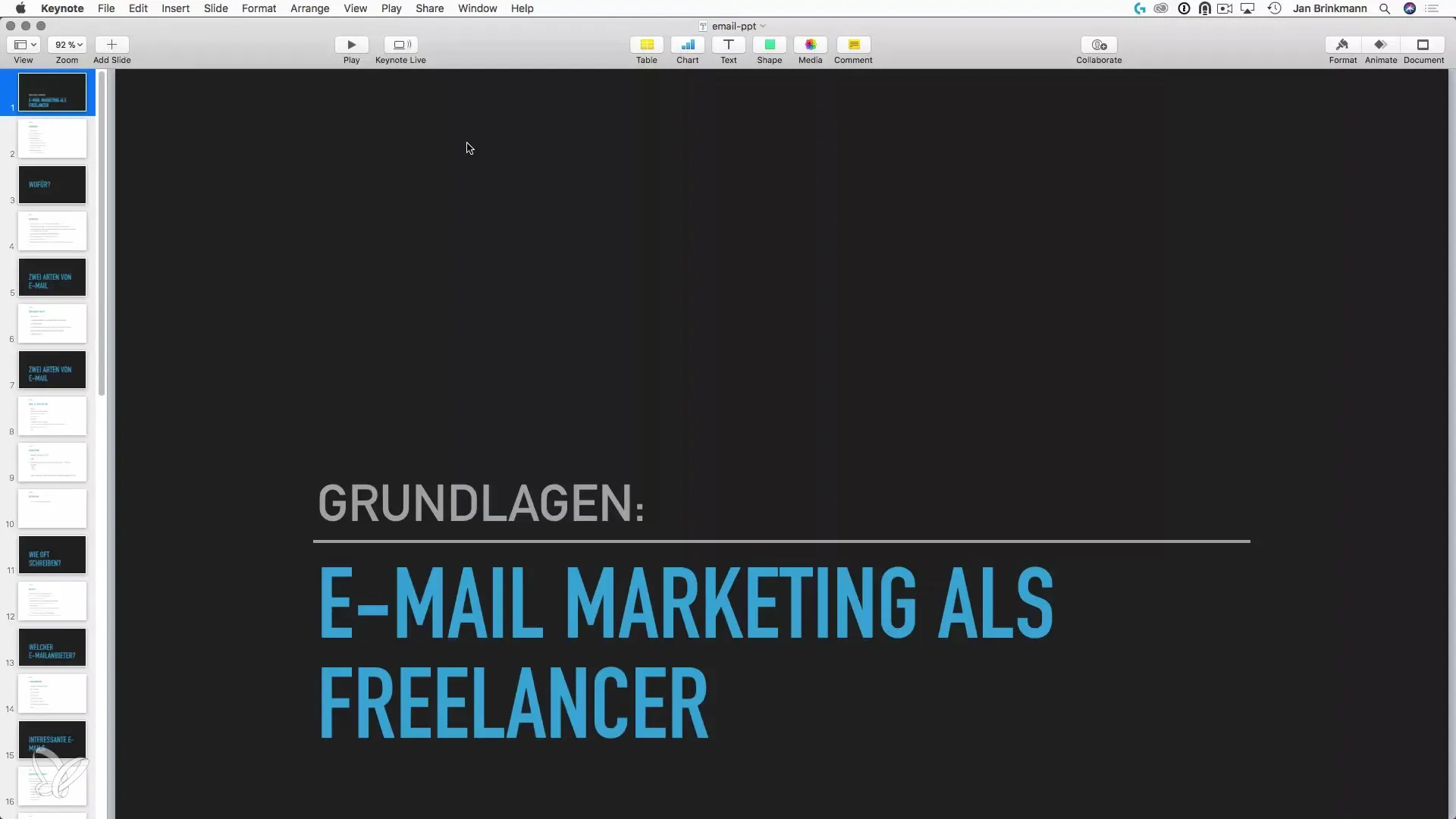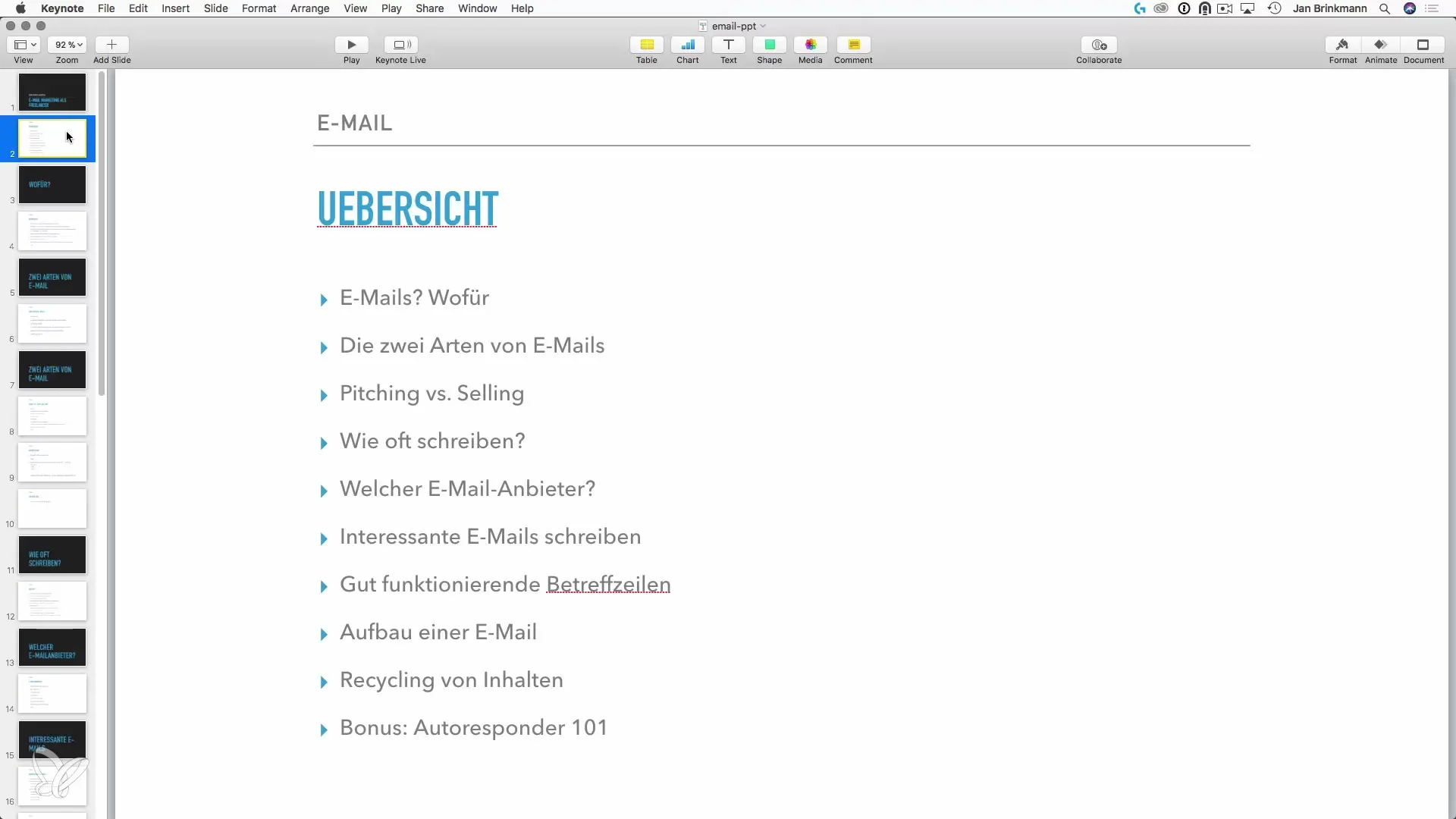E-Mail-Marketing is one of the most effective methods for customer acquisition and retention. It allows you to communicate directly with your target audience, understand their interests, and offer your products or services in a targeted way. But before you start with automation and complex strategies, it is crucial to master the basics. Below you will find a structured guide that helps you develop and optimize your email marketing skills.
Key Insights
- Emails must be interesting and engaging to be read.
- Monitoring and evaluating the reactions to sent emails is essential to refine your strategy.
- Automation should only be used when there is a sufficient base of knowledge and data.
- The difference between newsletters and sales emails is immense, and each type has its specific objectives.
- The structure and design of your emails are crucial for the success of your campaigns.
Step-by-Step Guide
Step 1: Understand the Basics
First, it is important to understand the basics of email marketing. Emails should always be reader-friendly and engaging. Remember that the content of your emails should pique your readers' curiosity. Start with simple, clear messages before moving on to more complex content.

Step 2: Build Your Email List
Now it is time to build an email list. This list forms the foundation of your marketing. Spend time sending emails to this list to find out which approaches are effective and which are not. Experiment with different subject lines and content to see what resonates best.
Step 3: Monitor Reactions
Once you start sending emails, watch your recipients' reactions closely. Use this information to adjust and optimize your strategies. Pay attention to which content generates more engagement and which may be less effective.
Step 4: Learn the Different Types of Emails
You should be aware of the differences between the various types of emails. Particularly important is the differentiation between newsletters and sales emails. While newsletters convey information and news, sales emails aim to actively promote your products or services.

Step 5: Frequency of Sending
The question of the right frequency for your email sends is crucial. Too many emails can annoy your subscribers, while too few emails may decrease your engagement. Find the right balance here to keep your readers informed without overwhelming them.
Step 6: Choose the Right Email Provider
Another important aspect is the selection of the right email provider. Look for features such as automation, analytics tools, and user-friendliness. A powerful provider can help you manage your marketing efficiently.
Step 7: Design Interesting Emails
The design of your emails must be well thought out. Pay attention to engaging subject lines and a clear, structured layout. Consider how your readers should be addressed and what information is of interest to them.
Step 8: Structure and Formatting
The structure of your email is of great importance. Use clear paragraphs, lists, or even images to enhance readability. Ensure that the email looks good on both desktop and mobile devices.
Step 9: Recycling Content
An effective way to utilize your content is recycling. You do not need to create completely new emails regularly. Consider how you can repurpose existing content to save time while still providing value.
Step 10: Introduction to Autoresponders
The use of autoresponders can help you automate your marketing strategy. This feature allows you to automatically send prepared emails to your subscribers. It is worthwhile to familiarize yourself with this option, even if we will cover this topic more intensively in the next videos.
Summary - Introduction to Email Marketing for Freelancers
Email marketing is an essential tool for anyone active in the digital space. The basics of creating and managing email lists, designing engaging content, as well as the correct frequency and automation are crucial for your long-term success. Experiment, analyze the results, and continuously adjust your strategy.
Frequently Asked Questions
What is email marketing?Email marketing is a strategy to communicate products or services directly through emails to potential customers.
How often should I send emails?There is no fixed schedule, but it is important to find a balance and not send too many or too few emails.
What are the best email providers?The best providers have features such as automation and analytics. Compare different options to find the right provider for you.
How do I design an interesting email?Pay attention to engaging subject lines, clear structure, and interesting content. Use visual elements and tell a story.
What does recycling content mean?Recycling means reusing existing content in a new form to save time while still providing continuous value.


